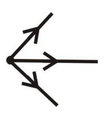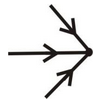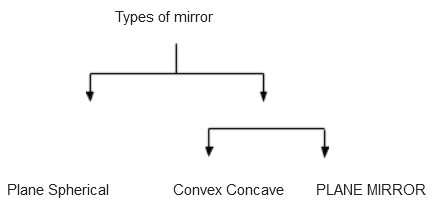
Images
Light of Class 10
It is a highly polished surface, which is quite smooth the capable of reflecting a good fraction of light from its surface.
Object
Anything which gives out light rays (either its own or reflected) is called an object.
- Real object: All physical objects and light sources are real which either scatter light rays or produce light rays.

- Virtual object: When converging incident rays are incident on the eye or an optical device, there is no single point from which light rays actually come. In this case, we say the object is virtual.

Images
The reproduction of an object formed by a mirror or lens is called an image.
An image is formed when the light rays coming from an object actually meet (or appear to meet) at a point after reflection or refraction.
Images are of two types.
Real Image
The real image is formed due to the real intersection of reflected or refracted rays. Real images can be obtained on the screen.
Or
The image formed when two or more reflected or refracted rays intersect each other at a point in front of the reflecting surface (mirror) is known as a real image. It can be obtained on a screen.
e.g. The images formed on a cinema screen are real images.
Virtual Image
The virtual image is formed due to the apparent intersection of reflected or refracted light rays. Virtual images can’t be obtained on the screen.
Or
The image is formed when two or more reflected or refracted rays appear to intersect at a point behind the normal. It can’t be obtained on a screen.
e.g. The image of our face in a plane mirror is a virtual image.
Human eye can’t distinguish between real and virtual images because in both cases rays are diverging.
Types of Mirror

Laws of Refraction
The incident ray, the refracted, and normal transparent media at the point of incidence all lie in the same plane.
The sine angle of the incident angle to the sine of the refraction angle does not change the given color light and the given pair of media. Therefore, this law is also known as Snell's law of refraction.
Refractive Index
The degree to which light bends from one place to another is called the refractive index. This depends on the speed ratio of the two media. When the scale is high, the bending increases. And the sine ratio of the incident angle and the sine of the refraction angle last on any given media pair. Explained by:
n = sin∠i / sin∠r = medium light speed 1 / medium light speed 2.
Total internal reflection
When light moves from denser to a rare medium, its bends from normal, the angle at which an incident ray causes the refracted ray to travel over two parallel media is called the critical angle.
If the incident angle is greater than the critical angle, it indicates the inside of the denser medium instead of the refracting. This condition is known as Total Internal Reflection.
E.g., mirages and optical fibers.
Also Check









